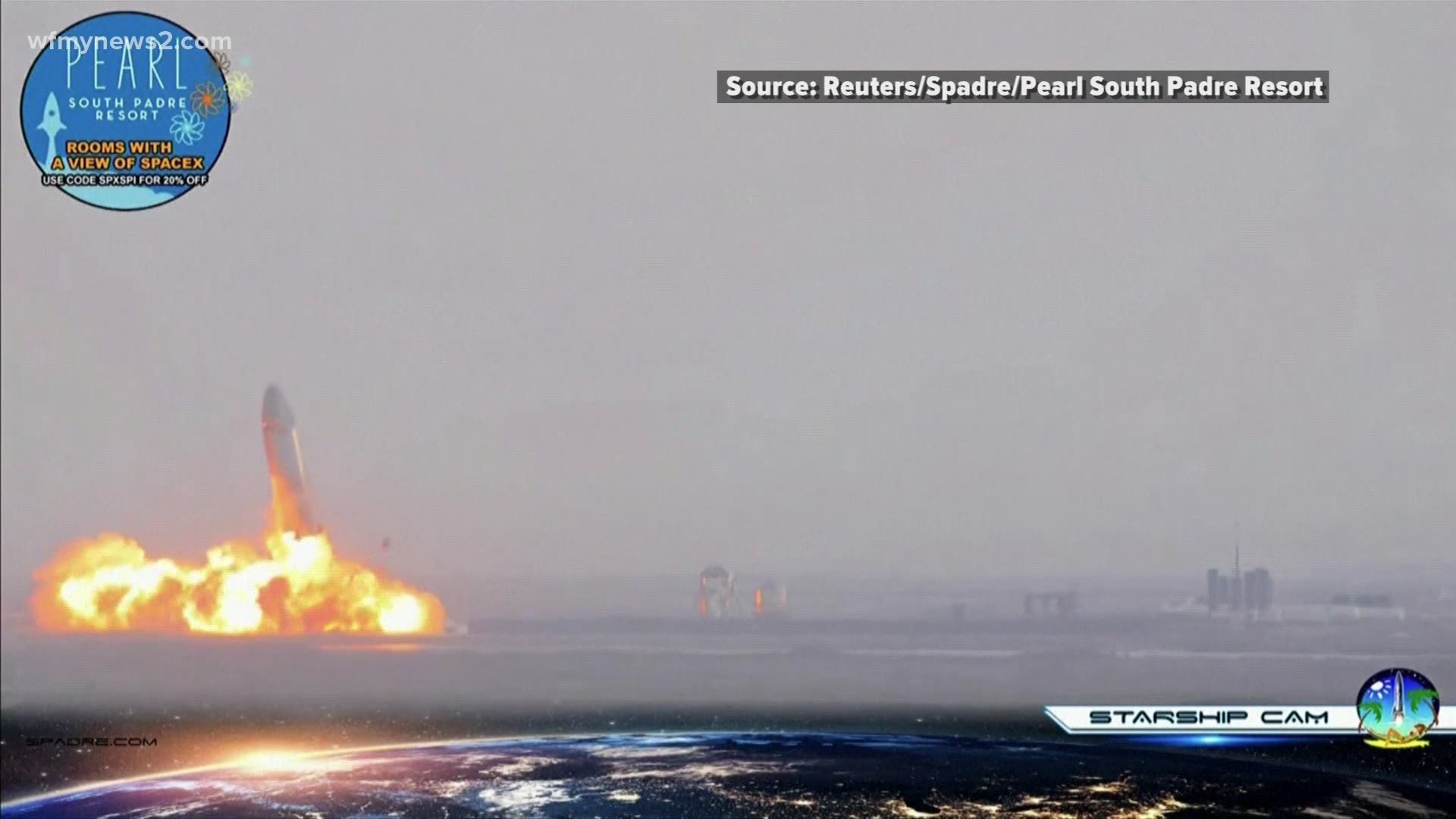GREENSBORO, N.C. — SpaceX recently launched a Starship rocket that exploded shortly after successfully landing vertically in Boca Chica, Texas.
This was SpaceX's third try at landing a Starship rocket, which is a heavy-left rocket designed to carry people and 100 tons of cargo to the moon and Mars.
The SN10 landed for just a few minutes, which is further than the SN8 and SN9 models.
Dr. Kiss, a professor with UNCG, explains how private company involvement in space travel could impact the future.
"Part of the goal of all these commercial companies is to make space more accessible and, in order to make space more accessible, it's still in the immediate future going to be expensive," said Kiss, "I think that's really the goal is to make space travel more common, more affordable, more economical so they need reusability and that's kind of what they're testing."
Kiss adds there will always be risk when conducting test flights, but believes SpaceX will have a completely successful flight in the future, after successfully landing at the international space station.
"For a long time, space flight was just really the preview of national governments. To have private companies working on this not only in the U.S. but in some other countries I think it's going to be opening some new possibilities for spaceflight and I think that is an exciting development," stated Kiss.
It's unclear what caused the explosion of the SN10 model rocket.
The company hopes to have a model standing 394-feet tall when paired with a first-stage booster. The vehicle would be fully reusable.
Musk is planning the first orbital flight for the Starship by the end of the year. He wants to fly Japanese billionaire Yusaku Maezawa around the moon by 2023.

